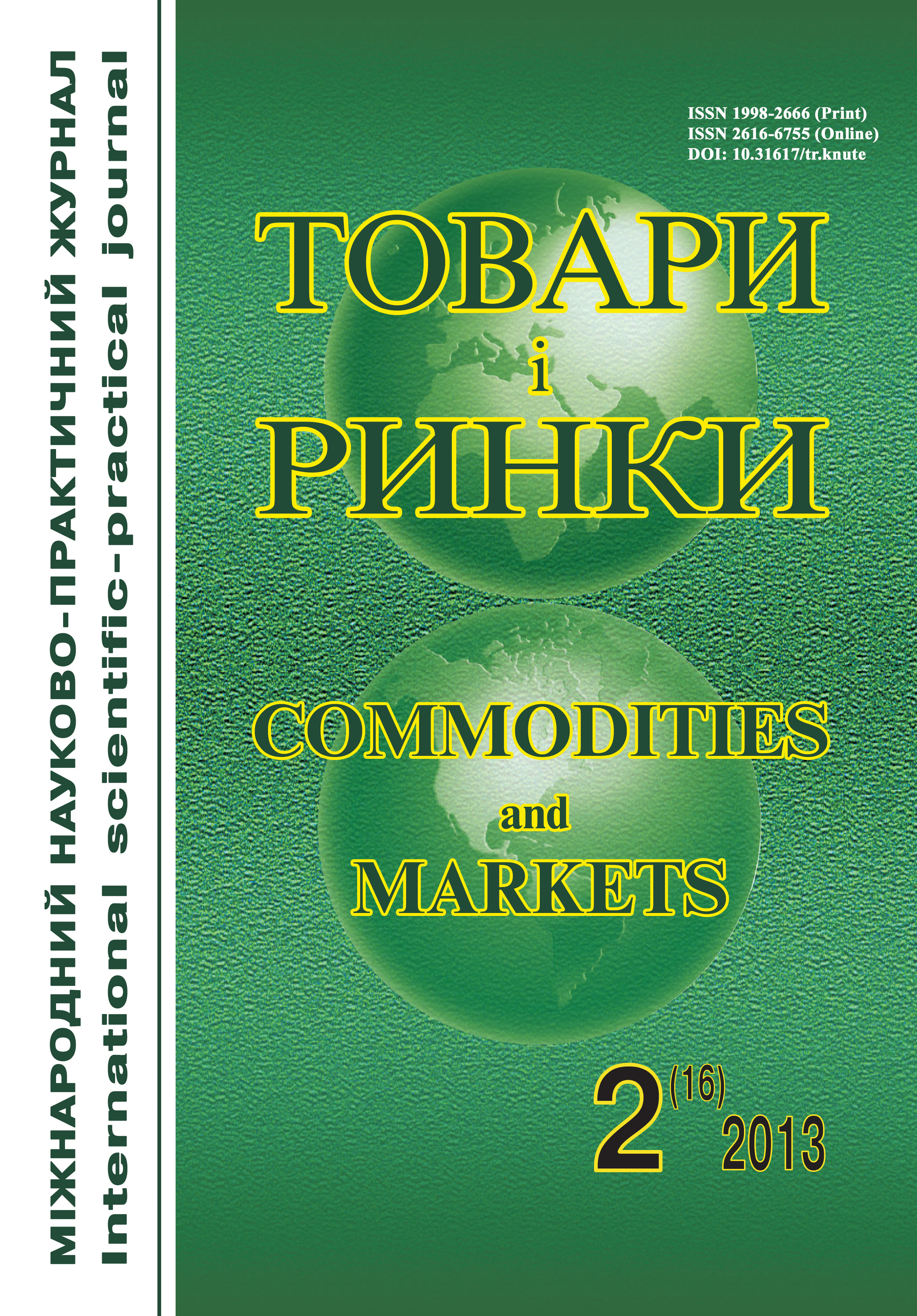Рermeability of combined packaging material from the renewable resources
Keywords:
packing, permeability, external mechanical actionAbstract
Background. There is no ideal packaging material, which would undergo with a balanced ratio of all claims that it has put forward. This is why the laminated and composite materials have the most universal characteristics though there is acute problems of eliminating waste synthetic analogues.
Purpose of the work is to study the influence of external mechanical effects (bend and break) on the permeability of the packaging material developed from renewable raw materials: cellulose, chitosan, wax.
Material and methods. The basis of combined packaging material (CPM ) – Cardboard brand SBB; film coating – with chitosan with a degree of low food distillation 79 % (by " Bioprohres", Russia), plasticizer film-forming solution – glycerol. To create the hydrophobia of chitosan coating on its surface coated with a thin layer of beeswax.
The influence of geometry, which takes in the formation of packaging material, on permeability. Measurement of the samples CPM was held by gravimetric method according to GOST 25898–83 [12].
Results. It is proved that the application of chitosan coating helps to provide some flexibility for CPM. This reduces stress rupture due to damping applied stress elasticity. The number of layers of chitosan coating affects the permeability of the material itself, which even at large bending is less than the single-layer coating. Conversely, increasing the number of layers of wax coating makes changing permeability at lower values of curvature as the wax has less elasticity. As a result, it is damaged with less mechanical stress.
Conclusion. It was determined that for bending up to 100 m-1 effect on permeability can be considered slight (20 %). For curvature within 100 <R-1 <360 m-1 water vapor permeability increases rather significantly. It is also found that the kinks should be no more than one in every 5 mm. Results confirm the possibility of packaging of various geometries and during transporting the products packed in new packaging deformation is possible and kinks will not reduce its quality.
References
But O. Karton s mnogotochyem / O. But, V. Gerasymchuk // Myr upakovky. — 2009. — No 6 (70). — S. 10—13.
Yvanova L. A. Kompozycyonnыe materyalы / L. A. Yvanova, A. E. Sergeeva, N. O. Kosycыn. — O. : TЭS, 2010. — 190 s.
Snob V. V. Analytycheskoe obozrenye potrebytel'skogo rыnka kombynyrovannoj upakovky / V. V. Snob // Peterburgskoe kachestvo. — 2007. — No 6 (150). — S. 2—3.
Koulz R. Upakovka pyshhevyh produktov / R. Koulz, D. MakDauell, M. Kyrvan Dzh. ; per. s angl. pod nauch. red. L. G. Mahotynoj. — SPb. : Professyja, 2008. — 416 s.
Upakovka harchovyh produktiv z polimernyh materialiv : monogr. / [Dubinina A. A., Synycyna G. A., Moshnyk O. G. ta in.]. — H. : Fakt, 2011. — 399 s.
Tkachenko E. "Konstruktor upakovki" i sovremennye bar'ernye materialy / E. Tkachenko, O. Kovalenko, M. Koval'chuk // Pererabotka moloka. — 2008. — No 3. — S. 30—31.
A new kind of multilayer films with low cost and improved barrier action // Food. Manuf. — 2004. — N 1. — R. 19.
But O. Pakety iz mnogoslojnyh plenok dlja pishhevoj promyshlennosti / O. But // Mir upakovki. — 2012. — No 1 (83). — S. 8—10.
Rozancev Je. G. Zashhitnye materialy dlja pishhevoj produkcii / Je. G. Rozancev, T. V. Ivanova // Pishhevaja prom-st'. — 2000. — No 12. — S. 40—41.
Gavva O. O. Osoblyvosti pakuvannja harchovyh produktiv / O. O. Gavva, M. A. Maslo // Upakovka. — 2001. — No 3. — S. 35—37.
Suhareva L. A. Taroupakovochnye materyaly v proyzvodstve y hranenyy pyshhevoj produkcyy / L. A. Suhareva, B. C. Jakovlev, E. Y. Mzhachyh. — M. : Pyshhepromyzdat, 2003. — 559 s.
GOST 25898–83. Materyaly y yzdelyja stroytel'nye. Metody opredelenyja soprotyvlenyja paropronycanyju. — [Vved. 1974—01—01]. — M. : Yzd-vo standartov, 1984. — 9 s.



